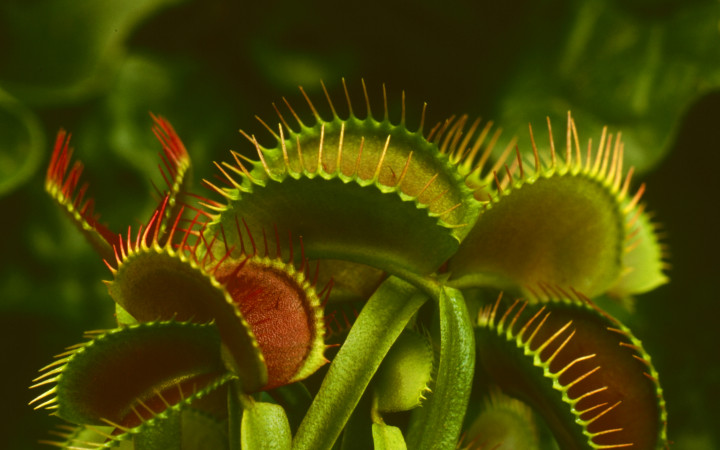Today’s Wonder of the Day was inspired by jae. jae Wonders, “where does the food a venus flytrap go” Thanks for WONDERing with us, jae!
We’ve learned about lots of interesting plants here in Wonderopolis. If you’ve been WONDERing with us for a while, you may know why the sensitive plant is shy. You might be able to spot a weed or poison ivy. Today’s Wonder is all about another of the world’s most interesting plants—the Venus flytrap!
Have you ever seen a Venus flytrap? If so, you may already know that its name is rather fitting. It certainly looks like a plant from another world! However, it’s very much a resident of the Earth, just like you and us. The Venus flytrap grows naturally in North and South Carolina, on the east coast of the United States.
How did this plant get the moniker “flytrap”? We bet you can guess! The Venus flytrap, also known as Dionaea muscipula, is one of about 630 species of carnivorous plants in the world. If you watch a Venus flytrap in the wild, you might just get to see it dine on a beetle, grasshopper, or spider.
Like other plants, the Venus flytrap gets energy from the process of photosynthesis. But unlike other plants, it tends to grow in soil that lacks nutrients. That’s why it has to find other ways to satisfy the dietary needs that other plants absorb through the ground with their roots. Experts believe that’s why, over time, the Venus flytrap evolved to eat insects.
How exactly does a Venus flytrap work? At the end of each leaf is the trap—two sections of leaf that hinge on a vein. The leaf is covered in tiny hairs that help the plant sense when prey is present. Bugs, drawn by the smell of the flytrap’s nectar, land on the leaf. This prompts the trap to snap shut, with the unlucky insect inside.
Once the Venus flytrap snaps closed, it secretes digestive enzymes. These break down the trapped insect into a soupy substance. The plant can then absorb the liquid, feeding off of the nutrients provided by its prey.
Today, Venus flytraps are a vulnerable species. In fact, they’re on the verge of being endangered. This is largely due to poaching—people illegally take the plants and sell them to others. They’re also threatened by habitat destruction as development projects ruin their homes.
Many people are fascinated by Venus flytraps and want one for their home. However, it’s important not to support poachers who harm native populations. If you or someone you know is looking for one of these unique plants, always find out where the plant came from before buying. If it was taken illegally from a protected area, find legally harvested plants instead.
What would you think if you saw a Venus flytrap in the wild? These unique plants are certainly a sight to behold. And they’re just one type of carnivorous plant! Let us know what you WONDER about the others.
Standards: NGSS.LS1.A, NGSS.LS1.C, CCRA.R.1, CCRA.R.2, CCRA.W.2, CCRA.W.4, CCRA.W.7, CCRA.W.9, CCRA.L.1, CCRA.L.2, CCRA.L.3, CCRA.L.6, CCRA.SL.1, CCRA.SL.2




